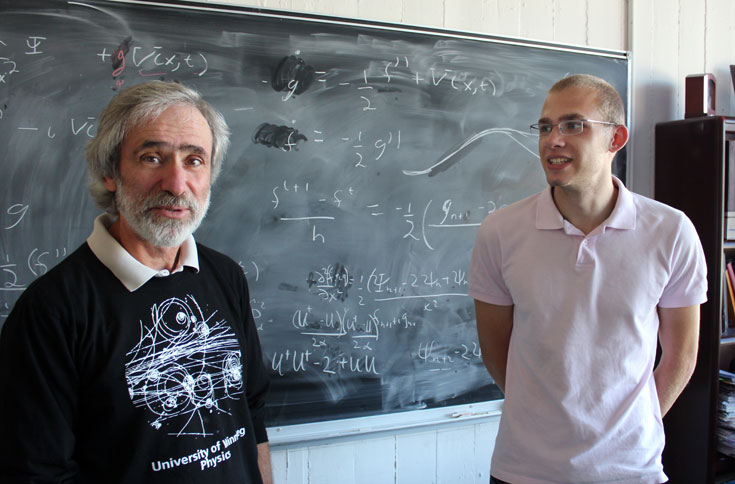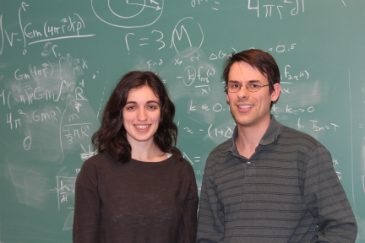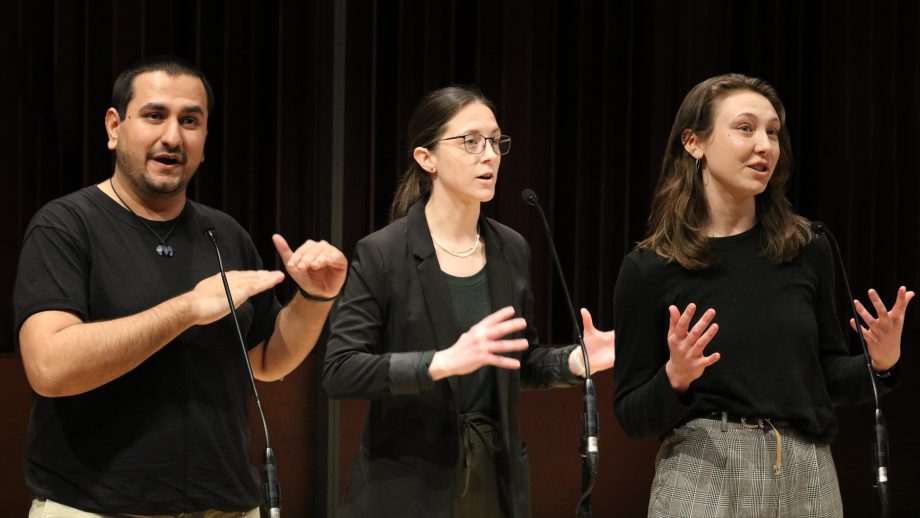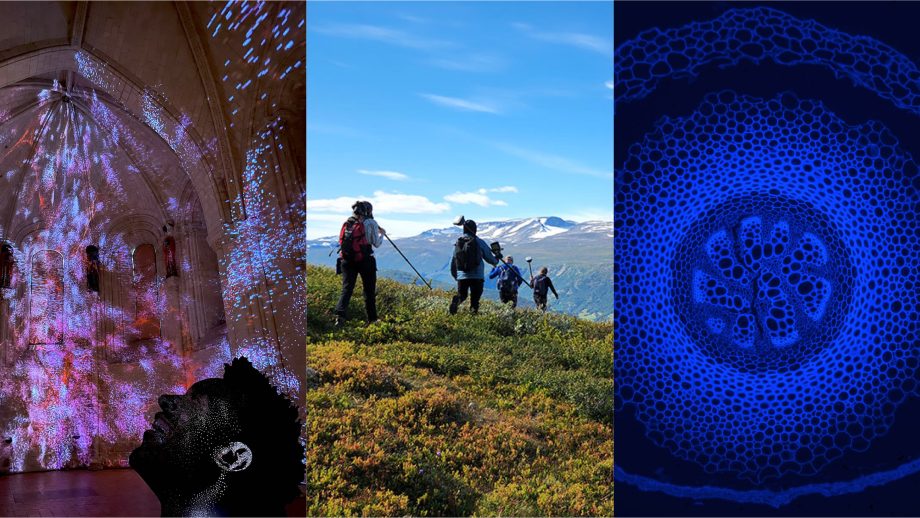UWinnipeg physics professors Dr. Andrew Frey and Dr. Gabor Kunstatter co-authored a paper with two UWinnipeg students, Allison Kolly and Nils Deppe (recently graduated and currently attending Cornell University) that was just published in Physical Review Letters (PRL) entitled Stability of anti–de Sitter space in Einstein-Gauss-Bonnet gravity.
“If you stir your coffee, how long does it take that energy to heat up the drink?”, explained Frey. “One of the great surprises of modern physics is that this type of question is related to black hole formation. Our investigates this idea using computer simulations of gravitational collapse to investigate.”
If one part of a system is heated, it is reasonable to assume that the heat will inevitably spread uniformly throughout the system as it comes to equilibrium. The team’s recent numerical simulations of microscopic black hole formation suggest that this may not in fact always be true in a holographic universe. Loosely speaking, the holographic principle states that the physics of a volume of space (called the bulk) is encoded in a theory that lives purely on the boundary of that volume, simply a different description of the same physics. Black holes play a vital role in the holographic principle, since bulk black hole states correspond to fixed temperature equilibrium states on the boundary.
Previous numerical work reassuringly proved that in Einstein gravity black hole formation in the bulk was both inevitable and predictable. The UWinnipeg group’s shows that if Einstein’s theory of gravity is modified at short distances this behaviour changes drastically: for some initial states black hole formation times exhibit fractal-like patterns while for others black holes seem not to form at all. Since most physicists agree that Einstein’s theory does require similar short-distance corrections, the holographic principle would then lead to the startling conclusion that some boundary states never reach equilibrium!
“I’m very pleased to be published in PRL,” expressed Kolly. “For the past two summers I have assisted my mentors Dr. Kunstatter and Dr. Frey with their research. Working with talented and passionate researchers has been an enriching experience.”
“Physical Review Letters is arguably the most influential physics journal in the world and certainly is the most cited,” said Kunstatter. “The criteria for acceptance of an article are rigorous, being based on validity and importance of the results as well as their broad interest. It is particularly satisfying that our undergraduate collaborators, Nils and Allison, did such important work so early in their respective careers. It is a real testament to their hard work and skill as researchers. Many distinguished physicists go through an entire career without ever publishing in PRL.”
To view the paper visit Stability of anti–de Sitter space in Einstein-Gauss-Bonnet gravity.
Physical Review Letters (PRL) publishes short, high quality reports of significant and notable results in the full arc of fundamental and interdisciplinary physics research. PRL provides readers with the most influential developments and transformative ideas in physics with the goal of moving physics forward. PLR is the most cited physics journal — every two minutes someone cites a PRL. Authors gain high visibility, rapid publication, and broad dissemination of their work.






